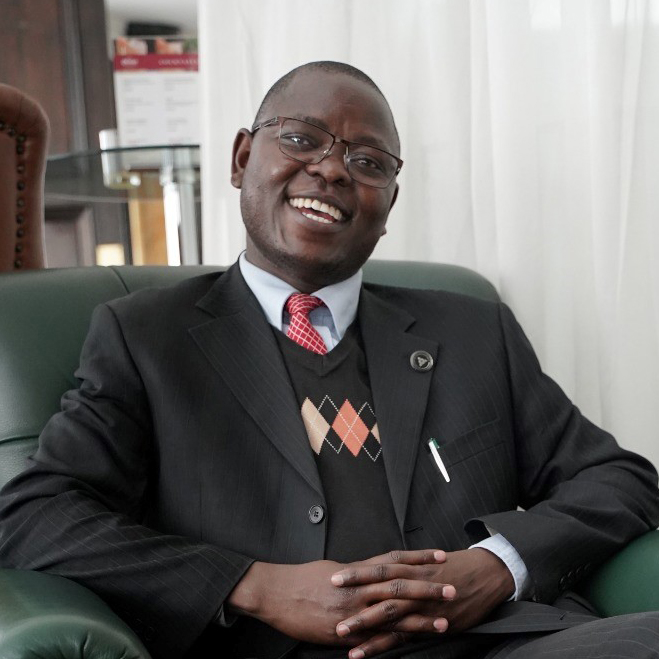
Architect and Chairman of NIKO Green, a consultancy in Nairobi, Kenya
Climate crisis, resource depletion, waste proliferation, social segregation and other societal challenges that we face emphasize the need for systemic changes and innovative approaches in key sectors of the economy.
The built environment which accounts for one-third of all the carbon emissions and waste created, and more than a third of all the material used globally is one such sector that needs radical transformation. It is now clear that we must build more just and regenerative communities.
Conversations about building decarbonization trend disproportionately towards operational efficiency. However, amidst increasing goals of zero net carbon, it is critical to account for the environmental impacts of every stage of a building’s life, including the materials used in the construction. The architecture, engineering, and construction industry is just starting to understand the immense carbon impact of building materials. To drastically reduce this impact, greater knowledge, and firm embodied carbon benchmarks and targets, must become part of building standards and planning policies that govern the construction of buildings and infrastructure.
Africa should not be confined to the peripheries of the building decarbonization conversations and action. I am convinced that Africa has a huge potential in leading the transition to a just climate-positive building design and construction. By 2050, Africa will be home to 1.1 billion more people than it is today. That’s nearly 75% of the world’s projected population growth of 1.5 billion more people. This means a huge demand for buildings, with 80 percent of those that will exist in 2050 yet to be built. While fulfilling this demand, the continent has a chance to lead the world in developing what Bruce King and Chris Magwood have described as a “carbon-smart architecture”.
Africa is endowed with huge renewable energy resources which makes it possible for every building on the continent to generate at least as much clean energy as it uses. Africa also has huge tracts of arable land that can be used to grow biobased building materials such as mass timber, bamboo, hemp, algae, and other agricultural crops and by-products that turn the tides toward net-zero carbon emissions. Africa still has a rich heritage of low-carbon vernacular architecture and traditional craftsmanship that can be transformed into a thriving climate-smart and culturally-appropriate modern construction industry. This would have a ripple effect on job creation and poverty eradication.
Just like Kenya has demonstrated through the mobile money transfer innovation (M-pesa), adopting an ‘Africa-focused’ approach to embodied carbon action could spur innovation with global relevance. It is this kind of faith that I, together with our team at NIKO Green, bring to the Carbon Leadership Forum (CLF). As I co-lead the development of a network of CLF Africa Regional Hubs, starting with Kenya, I wish to convene and amplify efforts that will integrate climate justice into building a regenerative design and construction industry. We’ll pursue this through a four-pronged approach that entails: building knowledge and technical capabilities of built environment professionals; generating data; reforming policy; and construction of functional pilot projects to allow people have a lived experience of regenerative architecture. These actions will be framed around a couple of questions.
“What does Africa need to do to design and construct buildings that absorb more greenhouse gases than they emit or that have “the smallest possible lifetime footprint?” How do we connect embodied carbon in buildings with the broader goals of sustainable local economic development? How do we build decent houses and social infrastructure for those who lack them? What policy and governance structures are needed to drive this agenda? What are the transformations needed in architectural, engineering, and construction education and practice? How do we upskill and empower the burgeoning Africa’s youthful population in the design and construction of culturally situated, high-impact, real-world projects? How do we work with educators and schools to reinvent teaching and learning in more hands-on and community-focused ways? How can the beneficial recovery and reuse of materials steer the construction industry’s resiliency efforts?
How then can the rest of the global community support Africa on its net-zero carbon building journey? As the awareness about embodied carbon increases and the interest in carbon trading increases, there is a need to profile the immense potential of biogenic materials in generating carbon sinks. By developing robust methodologies to quantify these and including them in carbon trading mechanisms, we could unlock carbon credit funding that could be invested in building a sustainable Africa. International companies should invest in setting-up local manufacturing hubs in Africa to serve Africa and its neighbouring markets instead of mining raw materials from Africa and shipping them overseas for processing then exporting manufactured materials back to Africa. There is also a need for strengthening meaningful partnerships towards research, development, and transfer of appropriate technologies for climate-smart building design and construction.

Nickson Otieno is Chairman of NIKO Green, a company based in Nairobi, Kenya, providing evidence-based and technology-enabled sustainability solutions to support the transition to a climate-smart, green and circular economy. He is the volunteer co-lead of a new Carbon Leadership Forum Regional Hub in Kenya, spearheading collective action to accelerate the transformation of Kenya’s building sector to radically reduce the greenhouse gas emissions attributed to materials used in buildings and infrastructure.
Note: Do you have an idea for a VIEWPOINT post? Envoyez-nous un email. Views expressed in a VIEWPOINT post are those of the author, and do not necessarily represent the views of the Carbon Leadership Forum or its staff.






